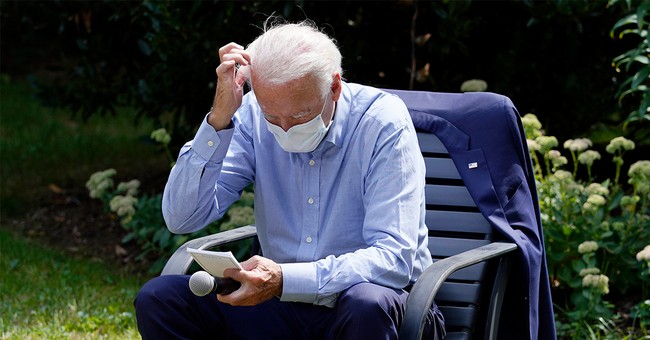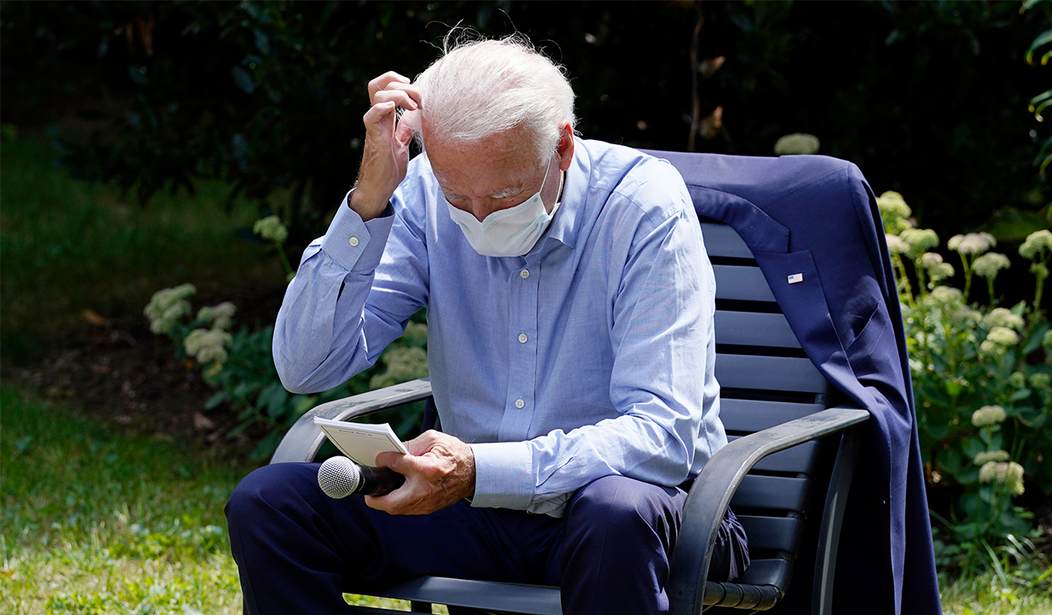
H/T to my friend Ed Morrissey over at HotAir for this story calling attention to what seem to be some unmistakable shifting in polls away from the models that produced wide margins of victory for Democrats in the 2018 midterm election.
I’m not a “polling guy”. If you want expert polling analysis, I recommend my colleague here at Red State, Scott Hounsell. But they are a curiosity for me, and the article from HotAir had some interesting nuggets of polling information.
As reported in the NYT, recent polling shows some potential weakness for Joe Biden in a few key demographic groups when his numbers are compared against the voting results of similar groups in the 2018 midterm elections which produced significant gains for Democrats in the House of Representatives. The Biden campaign has hoped to replicate that electorate turnout in order to flip a few critical states that Clinton lost by narrow margins in 2016, and if Biden’s polling was close to the results in the congressional elections in 2018, he would likely be able to do so comfortably.
The “national” polling number has maintained a consistent head-to-head advantage for Biden all through the summer, but the national polling is practically worthless for two very specific reasons in my opinion. The major polling outfits and their media partners have historically created electorate turnout models that under-represent conservative/GOP voters, and over-represent Democrats and democrat constituencies, and at the same time almost completely ignore historical trends about voter reliability. For several election cycles in a row, these subjectively assembled turnout models have all been in error in the same direction — against the conservative/GOP opponent.
Beyond the fraudulent modeling, the national polls are simply irrelevant because of demographics and state populations. Biden will probably win the popular vote in California, New York, and Illinois by more than 8 million votes combined. Because of that, he might win the national popular vote by 5 million votes. But Trump might nevertheless still win more states in the electoral college in 2020 than he won in 2016. When the national polling number says Biden is +5, that number is meaningless to me because Biden is likely going to be “+” something on election night even when he loses. If he was +10 then I would say he wins a big victory. Some pollsters have models for where the “+” number likely reflects an even race in the electoral college, but I just don’t have a lot of faith in any of them on that point. So a “+” number between +2 and +7 for Biden nationally might still mean a win for Trump in the electoral college, and I don’t know where in that range is the dividing line.
But the NYT article mentioned above shows that even if Biden runs up huge margins in states he’s going to win handily, his lagging support among key constituencies as compared to how those constituencies voted in the 2018 congressional elections shows he will still struggle to win states lost by Clinton by narrow margins. As a result, his election prospects are beginning to dim in terms of the electoral college. This would account for the increasing level of seeming desperation coming from his campaign as they wrestle with how to stage appearances for him, and how to respond in their messaging to events in real-time. Because of Biden’s obvious mental decline, the Campaign knows that the more the public sees of him the less they will be inclined to vote for him. The gameplan for winning has always been to protect his polling lead from the summer, limit his exposure, and count on the pandemic and “Trump-fatigue” to trim off enough of Trump’s supporters from 2016 to reverse the outcomes in states like Pennsylvania, Wisconsin, and Michigan.
Here are some of the key takeaways from the NYT article’s review of a Pew Research study on the 2018 races, and Biden’s current polling with crucial voting groups who delivered those congressional victories to Democrats in the mid-term election.
First, voters who had not voted in 2016, but who did turn out to vote in 2018 preferred the Democrat Congressional candidate over the GOP opponent by a margin of 68-29. That was not a huge number of voters as compared to the overall electorate in 2018, but the fact they came out to vote to return control of the House to Democrats after not having voted for Clinton means their participation in 2020 is crucial to Biden being able to approach the same numbers at the polls.
But part of that dynamic that is difficult to replicate for a new Congressional candidate is the localized desire to vote for the individual who is a local candidate in the race — someone who might be well known to voters from having served in other offices. If Biden’s presence as the nominee doesn’t inspire a similar degree of enthusiasm in 2020, those same voters might not have the same level of motivation to turn out for Biden in 2020 as they did for the new local Democrat trying to capture a House seat in 2018.
Biden’s weak “enthusiasm” numbers come into play here. It is one thing for voters under 30 to turn out and vote for a young energetic newcomer like AOC. It’s a completely different issue for them to turn out and vote for a candidate in his late 70s who has been in politics since the 1970s, was among the least preferred candidates in the demographic during the primaries, and who selected as his VP running mate the one individual who was most disliked by the younger demographic of the Democrat party.
There is no voter bloc in the Democrat coalition who is less dependable on election day than the youth vote. Whether Biden can get them to the polls in 2020 the same way they went to the polls in 2018 is a largely unanswered question. The NYT article points out that the Biden campaign and DNC don’t have anything close to the “ground game” the Clinton campaign had put together in 2016. But even with that ground game, Clinton captured only 55% of the youth vote compared to the 60% won by Obama in 2012. The “high water” mark for Democrats and the youth vote was 2008 when Obama won 66% in cruising to victory over John McCain. Obama was 47 years old.
Adding to the obvious, Biden’s physical condition makes it impossible for him to hold multiple campaign rallies across several states for multiple days on end as would normally be the case. This problem will not get better in the final 50 days.
A second weakness shown by polling could produce a blowout Trump victory — a much higher level of support for Trump among Hispanic voters. While nationally, Biden leads Trump among Hispanic voters by 25-30% depending on the poll, that is substantially weaker than Clinton’s standing with Hispanics in 2016. And a sizeable portion of that lead is in the Hispanic populations of California and New York. In other states where Hispanic voters can decide the outcome of a race, Trump is much closer — and maybe even ahead of Biden. A recent poll of Hispanic voters in Florida had Trump and Biden tied. If that holds through election day Trump will cruise to a comfortable win in Florida. Clinton beat Trump with Hispanic voters in Florida in 2016 by 35%, and she still lost the state. Polling from last week shows Biden ahead of Trump in Florida among Hispanic voters by only 16%. We’ll know a lot about Florida in the next 30 days if Biden and Harris have no campaign events there. That will mean the Biden campaign has already lost Florida.
“Where they go” is the biggest indicator of where both Campaigns see the race. Trump has made stops in North Carolina, Michigan, and Nevada. The trip to Nevada is particularly interesting, as it is a state that Clinton carried in 2016, and the Hispanic vote in Nevada — especially unionized workers in Clark County/Las Vegas — tilt the state in favor of Democrats in most recent statewide races. The vestiges of Harry Reid’s Democrat party machine remain strong throughout the state. But if Biden is underperforming with Hispanics in Nevada, bringing the state into play such that Trump sees value in spending time there, that bodes ominously for Biden in nearby Arizona and Colorado, where Hispanic support for Democrat candidates is also key to winning statewide races.
But Hispanic voters could also play a key role in the outcome of what has become another battleground state — after having been a safe GOP state for decades. The Hispanic population of North Carolina is much larger than most of the rest of the country realizes, traced in large part to the migration of farmworkers from western states to the agricultural areas of North Carolina over the past 25 years. The Hispanic population of North Carolina grew by nearly 25% between 2010 and 2018, substantially ahead of the national pace of 18% growth in the same time period. There are now more than 1 million Hispanics living in North Carolina.
Exit polling in 2018 found that Hispanics in North Carolina preferred Democrat congressional candidates by a margin of 69% to 29%. With approximately 300,000 Hispanic voters, that spread was worth a 140,000 vote margin. If Biden is underperforming with Hispanics in North Carolina in the same way the polling shows he is underperforming nationally, that builds in a bit of a firewall for Trump in a state he won narrowly in 2016, but where polling for him in 2020 has been troubling.
Again, I’m just an amateur when it comes to polling. But while the media blares away the top-line national number, the smaller “inside” numbers where the election will be won and lost suggest all is not well in the Biden campaign.















Join the conversation as a VIP Member